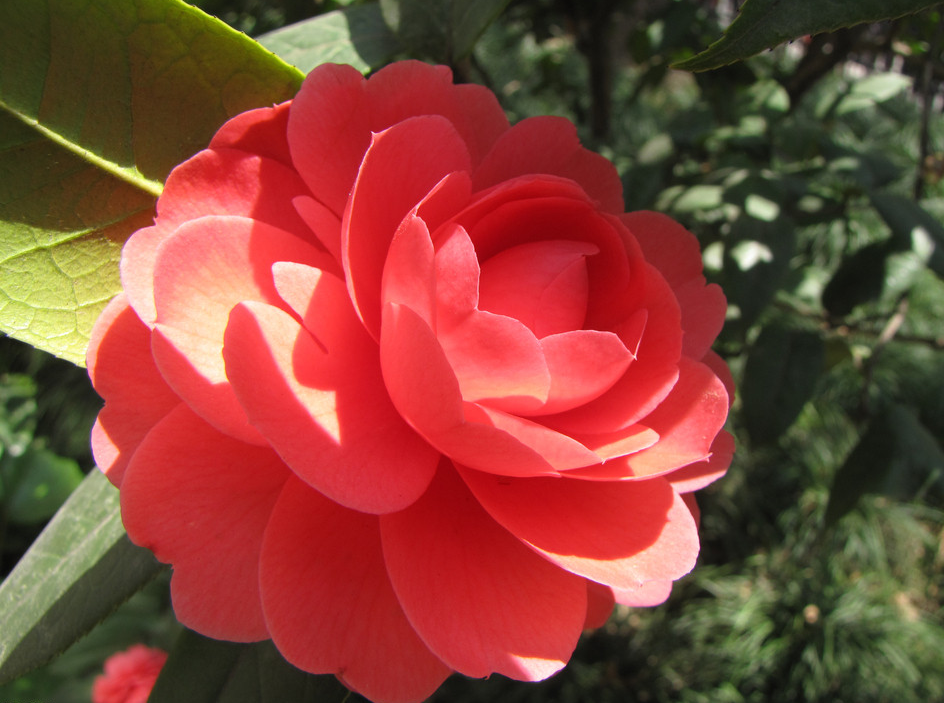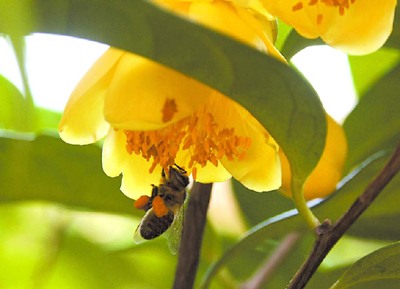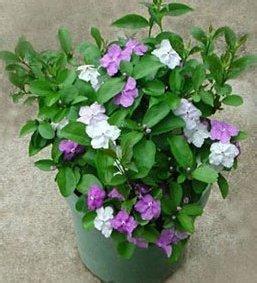Culture skills and methods of Tea Plum
-, basin soil
If it is potted tea plum, it is appropriate to choose the soil with loose texture, smooth drainage, fertile and slightly acidic soil. In the north, it is appropriate to use rotten leaf soil or peat soil as the main culture soil. The best pot for tea plum planting is the earthen basin, which is breathable and absorbs water. The new basin is soaked in water-it can be used after day and night annealing. The old basin must be cleaned with water and disinfected before use, which can effectively prevent diseases and insect pests.
The pot can be changed according to the size of the tea plum, and the size of the basin should be in proportion to the size of the plant. Planting time is best in early spring 2-3 months, after planting, watering a time permeable, put semi-shade, shelter, warm place slow seedling for 1-2 weeks, so that tea plum can resume growth, and normal maintenance and management.
Pot soil should choose loose and fertile mud or sandy loam, clayey soil, alkaline soil are not suitable, lime soil is more taboo, a hundred plants will not live. The hole at the bottom of the basin should be unobstructed, and the bottom of the basin should be covered with a layer of coarse sand or coarse slag to facilitate drainage and ventilation.
Fertilization and fertilization
For fertilization, tea plum for fertilizer and water requirements and make particularly high, light, and fully mature. If you apply raw fertilizer or heavy fertilizer, it will burn the roots. The young seedlings are tender and weak, and they can not be fertilized with thick fertilizer. Under the same circumstances, a second dilute nitrogen fertilizer was applied from February to March to promote the growth of branches and leaves; a second dilute pancake fertilizer and water was applied from April to May to facilitate flower bud differentiation; and from September to October, 0.2% potassium hydrogen phosphate was applied to promote the flower color.

In order to maintain the proper acidity of the basin soil, it can be combined with fertilization to irrigate alum fertilizer water or water with grass bubble brush. The newly planted tea plum seedlings should not be fertilized at all. If they apply fertilizer prematurely, it is easy to cause the seedlings to die. Because the growth environment of the tea plum seedlings has changed, and it is harmful to burn and break the roots when the seedlings are raised, it will take a long time for the tea plum seedlings to adapt to the new environment and recover their vitality. If they just start to grow tender roots, they will surely burn the seedlings by applying fertilizer one after another.
No root fertilizer can be applied for two or three months after planting. When the tea plum leaves take root, the leaves of tea plum can be sprayed with 0.2% potassium hydrogen phosphate aqueous solution and a very small amount of urea nitrogen fertilizer to accelerate the vigorous growth of tea plum seedlings. Spray once in 7-10 days for 1-2 months, through leaves to absorb nutrients, promote root growth, until new branches and leaves grow, and basically aging, Huan can pursue the application of root fertilizer, but at the beginning can not apply thick fertilizer, so it is necessary to apply light fertilizer frequently, half a month, to promote its roots strong leaves luxuriant, rapid growth. How to cultivate potted Camellia oleifera
Potted Camellia oleifera is a rare tropical rain forest plant with changeable shape and ecological habits. Many people think that potted tea plum is a very magical plant, so let's learn about the breeding method of potted tea plum.
Culture method of potted tea plum
1. Propagation and cultivation techniques of potted tea plum-soil
Potted tea plum needs soil requirements first of all is to have good air permeability, water permeability quickly will not cause soil stagnant water. The second is the high water retention capacity of the soil, which keeps the soil fertile all the time. Planting potted tea plum needs to choose slightly acidic soil, and the addition of humus can help to change the acidity of the soil.
2. Propagation and cultivation techniques of potted tea plum-watering
Potted Camellia oleifera has a well-developed root system and a very strong water-locking ability, but the amount of watering is still not too much. The second is to keep the basin soil moist all the time, and remember to spray water to the basin soil in summer, especially when it is high temperature, to increase the moisture wettability.
3. Propagation and cultivation techniques of potted tea plum-- fertilization.
The fertilization of potted tea plum is to create opportunities for the growth and development of the whole plant, so that nutrients can be fully satisfied. Potted tea plums can be changed every two years and some fertilizer can be added to the soil.
IV. Propagation and cultivation techniques of potted Camellia oleifera
In summer, the temperature will exceed 30 degrees, this temperature is not suitable for the growth of potted tea plum, so it is necessary to shade and cool potted tea plum in summer. The culture method of tea plum and the appreciation of tea plum pictures
Different plants have different breeding methods, especially in the specific details, there is a little error, plants will suffer from unexpected diseases. Then let's take a look at the culture methods of tea plum, and at the same time, let's enjoy some pictures of tea plum. The cultivation method of tea plum: first, if the potted soil is potted tea plum, it is appropriate to choose the soil with loose texture, smooth drainage, fertile and slightly acidic soil. In the north, it is appropriate to use rotten leaf soil or peat soil as the main culture soil. The best pot for tea plum planting is the earthen basin, which is breathable and absorbs water. The new basin is soaked in water for a day and night before it is annealed. The old basin must be cleaned with water and disinfected before use, which can effectively prevent diseases and insect pests. The pot can be changed according to the size of the tea plum, and the size of the basin should be in proportion to the size of the plant. Planting time is best in early spring 2-3 months, after planting, watering once permeable, put semi-shade, shelter, warm place slow seedling for 1-2 weeks, so that tea plum can resume growth, and normal maintenance and management. Pot soil should choose loose and fertile mud or sandy loam, clayey soil, alkaline soil are not suitable, lime soil is more taboo, a hundred plants will not live. The hole at the bottom of the basin should be unobstructed, and the bottom of the basin should be covered with a layer of coarse sand or coarse slag to facilitate drainage and ventilation. Second, fertilization for fertilization, tea plum for fertilizer and water requirements and make particularly high, strive to light, and fully mature. If you apply raw fertilizer or heavy fertilizer, it will burn the roots. One-year-old or two-year-old seedlings, the root system is tender and weak, but also can not apply thick fertilizer. In general, a dilute nitrogen fertilizer is applied from February to March to promote the growth of branches and leaves; a thin cake fertilizer is applied from April to May to facilitate flower bud differentiation; and 0.2% potassium dihydrogen phosphate is applied from September to October to promote the flowers to be large and colorful. In order to maintain the proper acidity of the basin soil, it can be combined with fertilization to irrigate alum fertilizer water or water with grass bubble brush. The newly planted tea plum seedlings should not be fertilized at all. If they apply fertilizer prematurely, it is easy to cause the seedlings to die. Because the growth environment of the tea plum seedlings has changed, and it is harmful to burn and cut the roots at the beginning of the seedlings, they will have to adapt to the new environment after planting. It will take a long time to recover their vitality. If they just start to grow tender roots, they will surely burn the seedlings with fertilizer. No root fertilizer can be applied for two or three months after planting. When the tea plum leaves take root, the leaves of tea plum can be sprayed with 0.2% potassium dihydrogen phosphate solution and a very small amount of urea nitrogen fertilizer to accelerate the exuberant growth of tea plum seedlings. Spray once every 7-10 days for 1-2 months, absorb nutrients through leaves to promote root growth, until the growth of new branches and leaves, and basically aging, can be irrigated root fertilizer, but at the beginning can not be irrigated thick fertilizer, to achieve light fertilizer frequently, once a semimonthly, to promote its roots strong leaves luxuriant, rapid growth. Third, watering properly is the key. Too much watering, basin soil too wet, resulting in root hypoxia, respiratory obstruction, resulting in root suffocation and death, after the first watering, as long as the basin soil is not dry, do not water, spray water to the plant and basin surface 2-3 times a day, keep the basin soil slightly moist, not only ensure that the leaf surface is not short of water, but also do not make the basin soil too wet, until tea plum seedlings begin to germinate, spread leaves and grow new branches, indicating that they have survived before they can be watered normally. Watering should keep the basin soil moist without making it too wet. Watering should be dry and wet, and watering should be thoroughly watered. Avoid watering waist water. Fourth, proper shading tea plum likes yin and dampness, and the semi-overcast environment is the most suitable. From April to September every year, it should be maintained under the shed. The intense summer sun burns leaves and buds, causing the leaves to curl, scorch and fall off. Even in autumn and winter, excessive light is harmful to its growth and development. Tea plums like to have plenty of sunshine, so they should receive all-day sunshine in spring. As the newly planted tea plum can not withstand the cold wind and sun in early spring, it should be placed outside in a place of shelter, warmth and semi-shade; if it is cold outside, it should be placed in a place with scattered light indoors, and only with the rise of the temperature can the basin be gradually placed outside. As the temperature continues to rise, the basin can be placed on the north windowsill or balcony of the north house around noon to accept only the rising sun and sunset, while avoiding the direct sunlight around noon. Summer should be placed under the eaves of the gallery or under the scaffolding in the courtyard. If there is no above equipment, sparse Reed sheds can be used to shade the leaves so as not to burn the leaves in the strong sunlight around noon, resulting in diseases. Fifth, the prevention and control of diseases and insect pests of tea plum is less, but it should be noted that the common main diseases are gray spot, soot, anthrax and so on. Once the disease occurs, it can be sprayed with the same amount of Bordeaux solution 300 times. If there are shell insects, red spiders and other damage, can be brushed off manually, there are red spiders, can be used to bubble tobacco water mixed with pepper water spray, the effect is also very significant. Summary: the above is the relevant culture methods of tea plum, as well as the appreciation of the relevant pictures of tea plum, what do you think? For friends who don't know much about breeding methods, you can also consult friends who know flowers around you. Some experience is always better, isn't it?
- Prev

How to grow Golden scented Tea
Golden scented tea likes warm and humid climate, acid soil with good drainage, shade at seedling stage, and sunshine after entering flowering stage. The requirement of soil is not strict, and it can grow in slightly acidic to neutral soil. Endure barren, but also like to be fat. Strong resistance to waterlogging
- Next

How to cultivate bicolor jasmine
Two-color jasmine is named mandarin duck jasmine, five-color jasmine, pan Mo jasmine is Solanaceae, mandarin duck jasmine genus, evergreen shrub, plant height 30cm 100cm. Its origin is in tropical America, and the flowers are dark blue from bud breaking to the beginning of blooming, but two or three days later, under the influence of light, temperature and other factors.
Related
- Fuxing push coffee new agricultural production and marketing class: lack of small-scale processing plants
- Jujube rice field leisure farm deep ploughing Yilan for five years to create a space for organic food and play
- Nongyu Farm-A trial of organic papaya for brave women with advanced technology
- Four points for attention in the prevention and control of diseases and insect pests of edible fungi
- How to add nutrient solution to Edible Fungi
- Is there any good way to control edible fungus mites?
- Open Inoculation Technology of Edible Fungi
- Is there any clever way to use fertilizer for edible fungus in winter?
- What agents are used to kill the pathogens of edible fungi in the mushroom shed?
- Rapid drying of Edible Fungi

